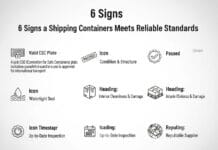When you’re planning a build, whether it’s a new home or something more commercial, the structure behind the walls is what matters. With different layouts and building styles to think about, choosing the best setup can feel a bit hard at first. To help you through it, here’s a simple guide that walks you through the important steps in choosing and using truss and frame systems for your construction job.
Start With the Basics: What Trusses and Frames Do
Trusses, you may not know, are those angled pieces that distribute the weight of the roof so that it doesn’t all bear down on one spot. Learning about what these pieces do gives you insight into your options when it is time to make decisions with your builder or supplier. They can determine the shape of your home and how straightforward it is to build other components, such as attic storage or skylights.
Use Truss and Frame Systems That Fit Your Needs
If you want to build faster and reduce stress during the process, pre-made truss and frame systems are worth a look. Many builders now use prefabricated options because they come ready to go straight from the supplier. That means less time measuring and cutting on-site and fewer chances for error.
They are built off-site based on precise pre-made specifications, which tends to yield slightly less variation than if everything were assembled by hand. Because they’re built in controlled environments, you avoid the delays and other on-site hazards. For jobs where timing and money count, that’s a big win.
Timber or Steel? Choose the Right Material
Timber is a common choice because it’s cheaper, easy to work with, and works well in all kinds of builds. It also has natural insulating properties, which help keep energy costs down. Steel is stronger, more resistant to termites, and won’t twist or bend over time like timber can. Always remember that your final decision depends on what’s more important for your build, cost, performance, or future durability.
Think About Roof Shape and Support Needs
Keep in mind that when you’re designing the roof, the pitch, or how steep it is, makes a big difference. A steeper pitch can help with water runoff, which is handy in areas with heavy rain, and it also adds a different style to the house. But the shape and size of your roof will change the kind of trusses you need.
If you’re going for wide open spaces inside, like an open-plan living room, you’ll need trusses that span longer distances without needing posts in the middle. Also, it’s a good idea to talk this through with your builder or an engineer before you start ordering materials, so everything lines up properly.
Work With a Trusted Supplier and Team
The quality of your trusses and frames depends not just on the materials but also on the supplier you choose. A good supplier will offer support from start to finish, including help with design specs and ongoing quality checks. Good communication between you, your builder, and the supplier gives you peace of mind knowing that if something doesn’t go to plan, you’ve got somebody who can help fix it.
Invest in a High-Quality Truss and Frame Today
Truss & Frame is one of the smartest things you can do for your build. When your structure is solid, everything else flows more smoothly, from the wall going up to the last tile being laid. So if you’re kicking off a new project, look at your options, talk to your team, and make choices that suit your goals. With the right frame and truss setup, you’re setting your build up for long-term success.





